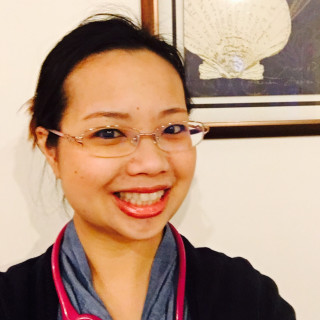
The complaints started as a shy, trembling confession. The male attending made a crude comment about my lipstick and since then I stopped wearing makeup. The male resident was way too touchy feely, so I tried to make my curves as vague and hidden as possible, yet suggestive and uninvited remarks were still made about my figure. My ambition and actions were also attacked, simultaneously for being too much and too little.
Then, the revelations - you too? - revealed that these experiences were far too common in medicine. The voices became more bold and visible, unapologetically sharing advice on lip gloss and shade, while also demanding that women in medicine be seen beyond their cosmetic choices and bodies.
About half of women in academic medicine report being sexually harassed and more than 50% report experiencing gender bias in the work environment. Anecdotally, women in medicine are still being asked about their child-bearing plans at residency and job interviews. Women are then passed over for committee and leadership positions because assumptions are made that they are too busy with family responsibilities and not interested. Meanwhile, women keep working hard, taking on menial tasks - thinking, hoping their bosses notice, but nobody does, and they are not rewarded the promotions or other meaningful compensation. All these micro-inequities add up to gaping gender disparities.
Since 2007, the number of women in US medical schools has been slowly approaching 50%, and ten years later, women made up 50.7% of the incoming class of medical students. However, in some ways, the gender gap worsens. Doximity reports on physician salaries revealed a 1% increase in the difference between women and men physicians’ pay from 2016 to 2017. Furthermore, multiple research studies show that women physicians are still consistently underfunded, underawarded, and underrepresented on podiums, editorial boards, and in medical journals.
The future, however, is not bleak. As the problems of gender gaps in medicine come to light through stories and data, so are a rising movement of #SheForShe and #HeForShe allies to solve them through education and policy changes. Several national conferences for women for women, designed by women, offer a seat at the table to learn how to negotiate a more equitable environment for themselves and their colleagues. Many medical associations also hold workshops for women with similar goals. Examination of three long-running career development programs for women physicians from 1998 to 2008 reveals increased faculty retention among participants. In recent years, many more programs have been launched, making lots of seats available, lots of tables to sit at. No sponsorship or invitation needed, because everyone is welcome to pull up a chair. It’s time to shatter the glass ceiling together, in our lifetime.
Afterall, change can happen quickly through social media. For example, #girlmedtwitter started as an online community where women in medicine seek advice about dry shampoo and relationships, and, in the same thread, inquire about specialty choices and discuss emerging drugs, therapy options, and procedural preferences. In a little over two years later, the hashtag morphed into a non-profit hustle that is launching its first conference to equip women in medicine with evidence-based, data-driven, actionable steps to advocate for themselves and each other. A masquerade ball is also on the schedule, because what better way to celebrate the future than dressing up in glamorous gowns to connect with one another while plotting out strategies to fix gender gaps.
The day is coming soon when women physicians won’t have to endure sexist remarks or discrimination. Women in medicine will fill leadership roles, hospital administrative offices, and journals. High bun or wavy curls bouncing, coral lipped or pink spectacled as they walk across the stage to accept awards, free to be accepted as they are, free to be beautiful and smart, and free to work on equitable playing fields. Whether it’s registering for a women’s conference or training workshop, or joining a medical society that is having key discussions and making policy changes, the path to the future is getting clearer. Let’s take the initiative to get in the room and make this happen.
Joannie T Yeh, MD is a pediatrician and a 2018-2019 Doximity Author.







